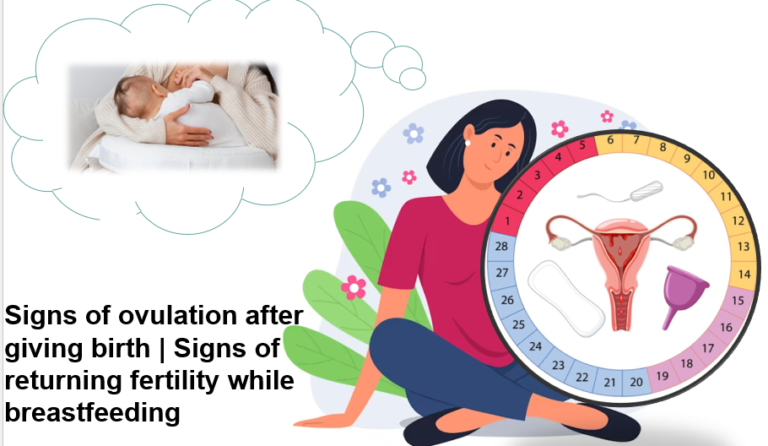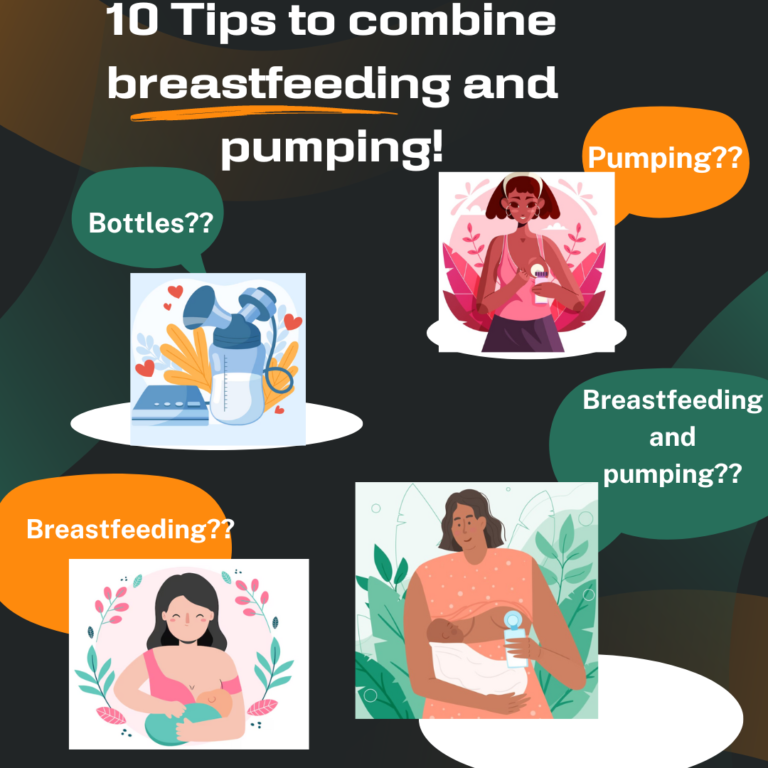Insufficient glandular tissue: How it impacts the breastfeeding womens

Breastfeeding is a vital aspect of infant care, offering numerous health benefits to both mother and child. However, some women face challenges due to a condition called Insufficient Glandular Tissue (IGT). In this article, we will explore what IGT is, its impact on breastfeeding women, and how to manage it.

What is Insufficient glandular tissue?
Insufficient Glandular Tissue (IGT) is a condition where a woman’s breast tissue doesn’t fully develop, leading to difficulties in producing enough breast milk for her baby during breastfeeding. This congenital condition varies in severity, with some women experiencing more challenges than others.
IGT affects the milk-producing glands and ducts in the breast, resulting in a decreased milk supply, slow milk flow, and problems with infant latching. It can be emotionally distressing for mothers who aspire to exclusively breastfeed.Managing IGT involves seeking support from healthcare professionals and lactation consultants. While there’s no cure for IGT, various strategies can help, such as frequent nursing or pumping, using nipple shields, and supplementing with formula or donor milk.
What are the 4 types of breast hypoplasia?
Breast hypoplasia, a condition where a woman’s breast tissue doesn’t fully develop during puberty, can manifest in various forms. There isn’t a strict categorization of breast hypoplasia into four distinct types, but rather it exists on a spectrum. Those four common presentations or characteristics of breast hypoplasia are often discussed:
1. Mammary Hypoplasia (Tuberous Breasts): This type of breast hypoplasia is characterized by breasts that are narrow at the base and often have a tubular or conical shape. The breasts may appear widely spaced apart and have underdeveloped glandular tissue.
2. Tubular Breast Deformity: Tubular breasts are typically small in size and have a narrow base with a conical or tube-like shape. They may have a lack of fullness in the upper part of the breast.
3. Glandular Hypoplasia: Glandular hypoplasia refers to underdeveloped mammary glands within the breast tissue, leading to a reduced milk-producing capacity. It can result in a low milk supply when breastfeeding.
4. Mammary Aplasia (Amastia): This is the most severe form of breast hypoplasia and involves the complete absence of breast tissue. Women with amastia may have little to no breast development, and breastfeeding is typically not possible without external milk supplementation.
It’s important to note that these categories are not always distinct, and many women with breast hypoplasia may exhibit a combination of these characteristics.
How Insufficient glandular tissue impacts breastfeeding women.
Insufficient Glandular Tissue (IGT) can have a significant impact on breastfeeding women and their breastfeeding experiences. Here are some ways in which IGT affects breastfeeding women:
- Low Milk Supply
- Frustration and Emotional Stres
- Difficulty with Latching
- Supplementation Requirement
- Increased Dependency on Pumping
- Seeking Support
- Breastfeeding Goals
In conclusion, IGT can make breastfeeding more challenging, but with the right support and strategies, many women with this condition can still enjoy a positive breastfeeding experience and provide their baby with valuable nutrients and bonding opportunities. It’s crucial for women with IGT to seek help from healthcare professionals and lactation consultants to develop a personalized breastfeeding plan that works best for them and their infants.

Can hypoplastic breasts produce milk?
Hypoplastic breasts, which are often associated with Insufficient Glandular Tissue (IGT), can produce some milk, but the milk supply is typically significantly limited compared to fully developed breasts. The degree of hypoplasia can vary from person to person, so the ability to produce milk and the amount produced can differ as well.
Hypoplastic breasts are characterized by underdeveloped glandular tissue, which is responsible for milk production. Because this tissue is limited in hypoplastic breasts, the milk-producing capacity is compromised. This often leads to a lower milk supply, slow milk flow, and challenges with breastfeeding.
Can I still breastfeed with IGT?
Yes, it is possible to breastfeed with Insufficient Glandular Tissue (IGT), but it often comes with challenges, and some mothers may need to supplement their baby’s nutrition with formula or donor milk. Here are some key points to consider:
- Limited Milk Supply: Women with IGT typically have a reduced milk supply due to underdeveloped or insufficient glandular tissue in their breasts. As a result, it can be challenging to exclusively breastfeed.
- Supplementation: Many mothers with IGT need to supplement breastfeeding with formula or donor milk to ensure their baby receives enough nutrition. This supplementation helps compensate for the limited milk supply.
- Breastfeeding Techniques: Some strategies, such as frequent nursing or pumping, can help maximize milk production. Lactation consultants can provide guidance on effective breastfeeding techniques and positions.
- Emotional Support: Coping with IGT and the challenges it poses can be emotionally taxing. Seeking emotional support from healthcare professionals, support groups, or therapists can be beneficial.
- Bonding and Health Benefits: Even if exclusive breastfeeding is not possible, breastfeeding with IGT can still provide valuable bonding time between the mother and baby. Breast milk, even in smaller quantities, offers essential nutrients and immune system benefits.
- Individual Variation: It’s important to remember that the impact of IGT varies from person to person. Some women with IGT may produce more milk than others, and each breastfeeding experience is unique.
In summary, while breastfeeding with IGT may require supplementation and pose challenges, many women can still breastfeed to some extent and experience the emotional and health benefits associated with breastfeeding. Seeking guidance from healthcare professionals and lactation consultants is essential for developing a personalized breastfeeding plan that aligns with both the mother’s goals and the baby’s nutritional needs.
How do you treat breast hypoplasia?
This is a condition characterized by underdeveloped breast tissue, can present challenges for breastfeeding mothers due to a reduced milk supply. While there is no cure for breast hypoplasia, there are various strategies and treatments that may help manage the condition and optimize milk production for breastfeeding. Here are some approaches:
- Breastfeeding Techniques: Working with a lactation consultant can be immensely helpful. They can teach you effective breastfeeding techniques, including proper latch, positioning, and breastfeeding frequency, to maximize milk extraction and production.
- Pumping: Regular and efficient pumping sessions, in addition to breastfeeding, can stimulate milk production. Using a hospital-grade breast pump and employing techniques like double pumping can be effective.
- Supplementation: It’s often necessary to supplement breastfeeding with formula or donor milk to ensure your baby receives sufficient nutrition. Your healthcare provider or lactation consultant can help you determine the right balance between breast milk and supplementation.
- Herbal Supplements and Galactagogues: Some herbs and supplements, known as galactagogues, are believed to help increase milk supply. Examples include fenugreek, blessed thistle, and prescription medications like domperidone. However, their efficacy can vary, and it’s essential to consult with a healthcare provider before using them.
- Skin-to-Skin Contact: Spending time with your baby skin-to-skin can help stimulate milk production and enhance the breastfeeding experience.
- Nutrition and Hydration: A balanced diet and staying well-hydrated are crucial for maintaining milk production. Ensure you are consuming enough calories and nutrients to support lactation.
- Emotional Support: Coping with the challenges of breastfeeding with breast hypoplasia can be emotionally taxing. Seek emotional support from healthcare providers, support groups, or therapists to manage stress and anxiety.
- Breast Massage and Compression: Gently massaging the breasts and using breast compression techniques while breastfeeding or pumping can help encourage milk flow and drainage.
It’s important to note that the success of these strategies can vary from person to person. The key is to work closely with healthcare professionals and lactation consultants who can assess your specific situation and help you develop a personalized plan to manage breast hypoplasia and provide the best possible nutrition for your baby.
What are the prevention measures for breast hypoplasia?
Breast hypoplasia, also known as insufficient glandular tissue (IGT), is typically a congenital condition, meaning it is present from birth and is often related to genetic factors. As such, there are no known specific prevention measures for breast hypoplasia. However, there are some general tips for maintaining overall breast health and ensuring the best possible breastfeeding experience:
- Healthy Lifestyle: Maintaining a healthy lifestyle with a balanced diet and regular exercise is essential. Adequate nutrition and overall well-being can support breast health.
- Breast Health Awareness: Be aware of any changes in your breast tissue or any concerns related to breast health. Regular breast self-exams and mammograms (as recommended by your healthcare provider) can help detect and address any issues early.
- Seek Medical Care: If you notice any unusual changes in your breast tissue or experience breast-related issues during pregnancy or lactation, consult with a healthcare provider promptly. Early intervention can sometimes help manage conditions that affect breastfeeding.
- Consult with a Lactation Consultant: If you plan to breastfeed or encounter breastfeeding difficulties, consider consulting with a lactation consultant early in your breastfeeding journey. They can provide guidance and support to optimize breastfeeding success.
- Establish a Support System: Surround yourself with a supportive network of family and friends who can assist you during pregnancy, childbirth, and postpartum, especially if you encounter challenges related to breastfeeding.
It’s important to remember that breast hypoplasia is not preventable, but with the right support and strategies, many women with this condition can still have a positive breastfeeding experience. Consulting with healthcare professionals and lactation experts is key to addressing any concerns or challenges that may arise during your breastfeeding journey.
Conclusion
In conclusion, insufficient glandular tissue (IGT) or breast hypoplasia is a condition that can present challenges for breastfeeding women due to its impact on milk production. While there is no cure for IGT, there are various strategies and support systems available to help manage the condition and optimize breastfeeding experiences.
Seeking guidance from healthcare providers, lactation consultants, and support groups is crucial for developing a personalized plan that aligns with both the mother’s goals and the baby’s nutritional needs. Breastfeeding with IGT may require supplementation with formula or donor milk, but it can still provide valuable bonding time and health benefits for both mother and child.
Frequently asked question
- Can women with IGT breastfeed?
Yes, but they may need to supplement with formula or donor milk due to reduced milk production.
2. What are the signs of breast hypoplasia?
Signs may include underdeveloped breasts, widely spaced breasts, and difficulties with breastfeeding.
3. Is there a cure for IGT?
There is no cure, but various strategies and support systems can help manage IGT and improve breastfeeding outcomes.














QlLUvLJMSFstJlDuEvP
obviously like your website but you need to test the spelling on quite a few of your posts Several of them are rife with spelling problems and I to find it very troublesome to inform the reality on the other hand Ill certainly come back again
Hi, thank you so much for letting me know, and I will be more careful from now on. As this is my first website, I am still learning and trying my best to improve. I hope that when you return, you will notice a significant difference. Thank you again for your valuable insights!
Excellent blog here Also your website loads up very fast What web host are you using Can I get your affiliate link to your host I wish my web site loaded up as quickly as yours lol
Hi, I am using Hostinger. Extremely sorry, I do not have an affiliate link.